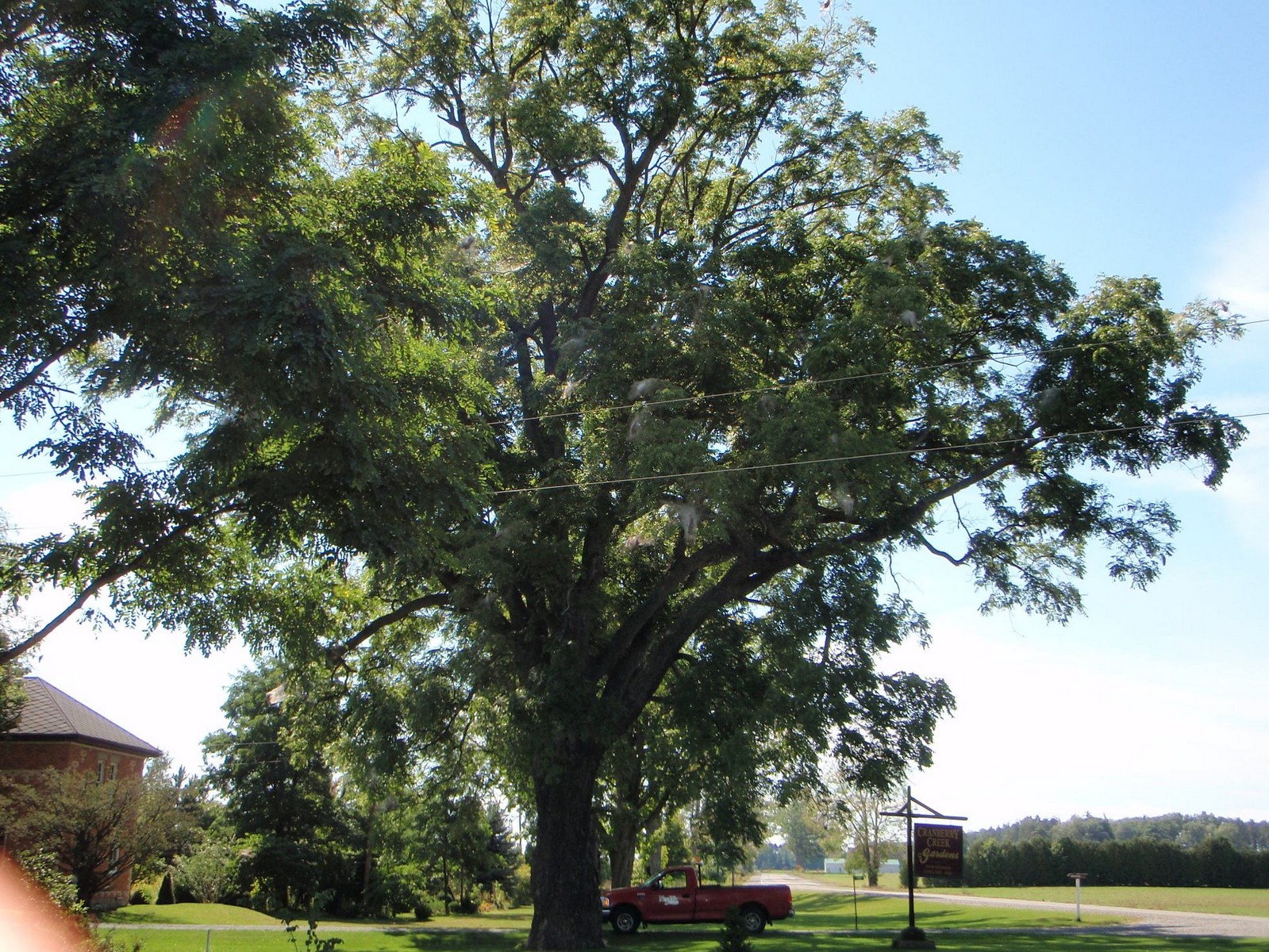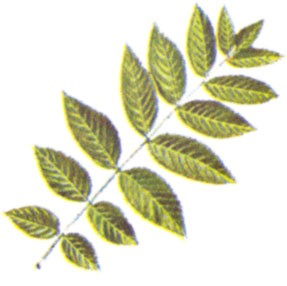Juglans nigra
Owner: Ingrid Bodnar
Nominator: Ingrid Bodnar
Height: 30.6 m (100 ft)
Diameter: 166.91 cm (65.7 in)
Circumference: 524.1 cm (206.3 in)
Description
Black Walnut can be found along many of Norfolk County’s rural roads, as well as in yards and in woodlots throughout the area. Also known as American Walnut and eastern black walnut, this tree can be found throughout southern Ontario, eastern and mid-western United States. Black Walnut is sensitive to soil conditions and develops best on soils that are deep, well-drained, moist and rich in nutrients. In hardwood forests, it can often be found growing alongside American Elm and Silver Maple. In general, where white ash, red oak, basswood and sugar maple grow well, black walnut thrives also. Black walnut is easily recognizible in the fall for its large, round green husk that provides the protective husk for the nut inside which is also protected by a rough shell. Its delicious nuts are a favourite for squirrels and can also be consumed by people. Good seed crops are produced irregularly, about twice in five years, with large seed crops occurring once the tree is 20 to 30 years old. The wood is heavy, hard, strong, durable and has a fine, straight grain, therefore making it valuable for hardwood flooring, veneer and for furniture making as it produces a beautiful dark brown finish.
Williams, Robert D. (1990, December). Silvics of North America, Volume 2: Hardwoods. United States Department of Agriculture, Forest Service. Retrieved date (2010, December 14th) from http://www.na.fs.fed.us/spfo/pubs/silvics_manual/table_of_contents.htm
Black Walnut leaf (Source: Auburn University)


